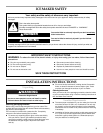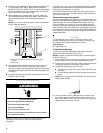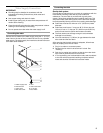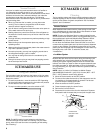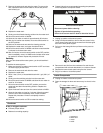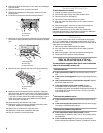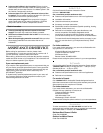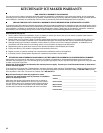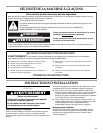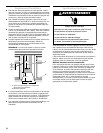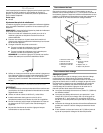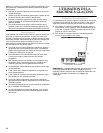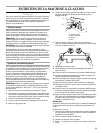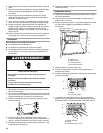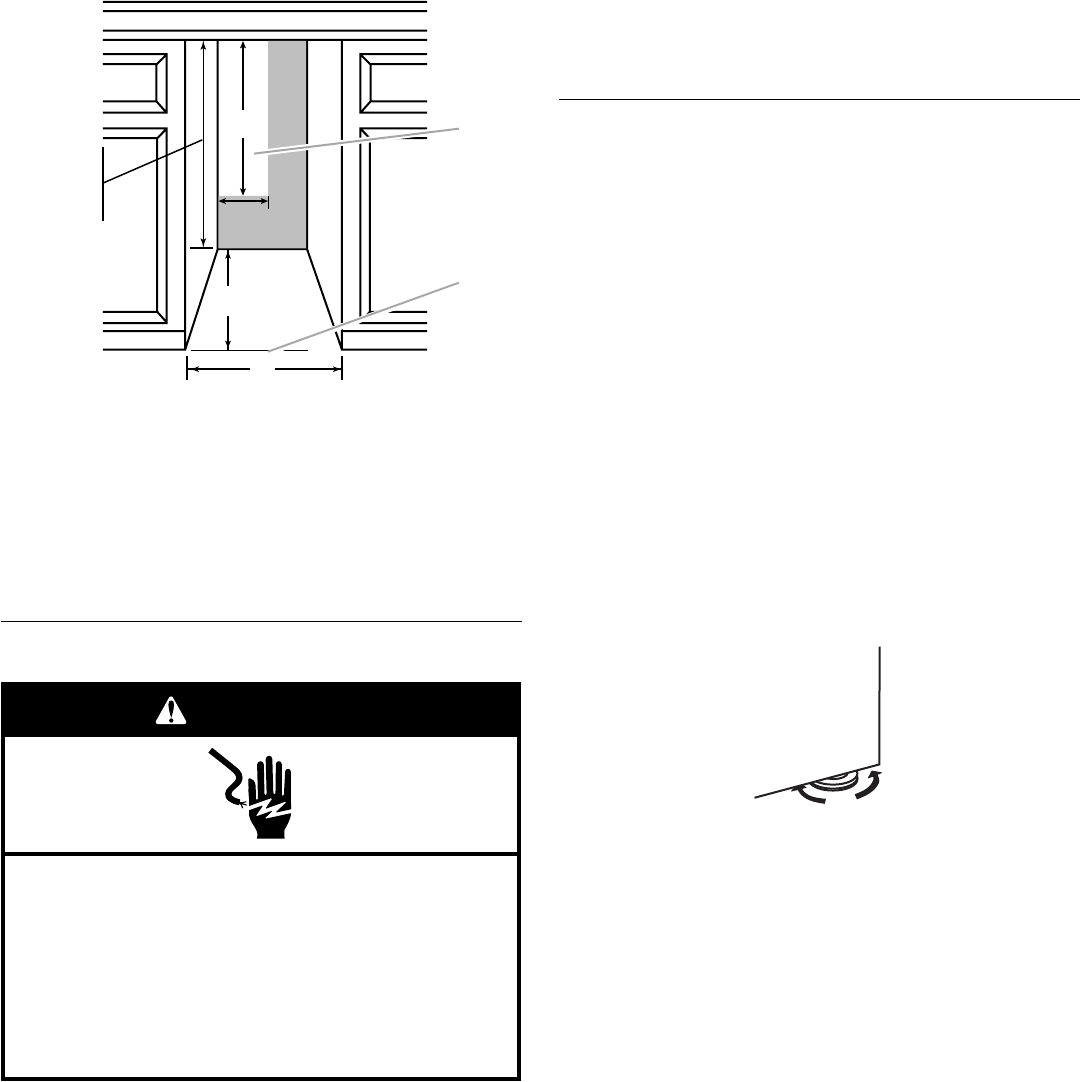
4
■ Choose a well ventilated area with temperatures above 45°F
(7°C) and below 100°F (38°C). Best results are obtained
between 70°F (21°C) and 90°F (32°C). It is recommended that
the unit be installed in an area protected from the elements,
such as wind, rain, water spray, or drip.
■ When installing the ice maker under a counter, follow the
recommended opening dimensions shown. Place electrical
and plumbing fixtures in the recommended location as
shown.
NOTE: Do not kink or pinch the power supply cord between
the ice maker and cabinet.
■ You should choose a location where the floor is even. It is
important for the ice maker to be level in order to work
properly. If needed, you can adjust the height of the ice maker
by changing the height of the front and rear leveling legs. See
“Leveling.”
■ For better performance and higher energy efficiency, do not
operate in direct sunlight.
Electrical Requirements
Before you move your ice maker into its final location, it is
important to make sure you have the proper electrical
connection:
A 115 Volt, 60 Hz., AC only 15 ampere electrical supply, properly
grounded in accordance with the National Electrical Code and
local codes and ordinances, is required.
It is recommended that a separate circuit, serving only your ice
maker, be provided. Use a receptacle which cannot be turned off
by a switch or pull chain.
Recommended grounding method
For your personal safety, this appliance must be grounded. This
appliance is equipped with a power supply cord having a 3 prong
grounding plug. To minimize possible shock hazard, the cord
must be plugged into a mating, 3 prong, grounding-type wall
receptacle, grounded in accordance with the National Electrical
Code and local codes and ordinances. If a mating wall receptacle
is not available, it is the personal responsibility of the customer to
have a properly grounded, 3 prong wall receptacle installed by a
qualified electrician.
Leveling
It is important for the ice maker to be level in order to work
properly. Depending upon where you install the ice maker, you
may need to make several adjustments to level it.
Tools required
■ Carpenter’s level
To adjust the leveling legs
Your ice maker has four adjustable leveling legs to help you
steady the product and make sure it is level.
NOTE: It is easier to adjust the leveling legs if you have another
person to assist you.
1. Place a carpenter’s level on top of the product to see whether
the ice maker is level from front to back and side to side.
2. Push up on the top front of the ice maker, and then locate the
leveling legs that are on the bottom of the product.
3. Change the height of the legs as follows:
■ Turn the leveling legs to the right to lower that side of the
ice maker.
■ Turn the leveling legs to the left to raise that side of the ice
maker.
NOTE: The ice maker should not wobble. Use shims to add
stability when needed.
4. Use a carpenter's level to make sure the ice maker is level
from front to back and side to side. If the ice maker is not
level, repeat Steps 2 and 3. If the ice maker is level, go to the
“Water Supply Connection” section.
A. Recommended Location for Electrical and Plumbing
Fixtures
B. Floor Level
15"
(38.1 cm)
24"
(60.1 cm)
34"
(86.4 cm)
Min.
34
1/2
"
(87.6 cm)
Max.
8
1
/2"
(21.6 cm)
25"
(63.5 cm)
A
B
Electrical Shock Hazard
Plug into a grounded 3 prong outlet.
Do not remove ground prong.
Do not use an adapter.
Do not use an extension cord.
Failure to follow these instructions can result in death,
fire, or electrical shock.
WARNING





